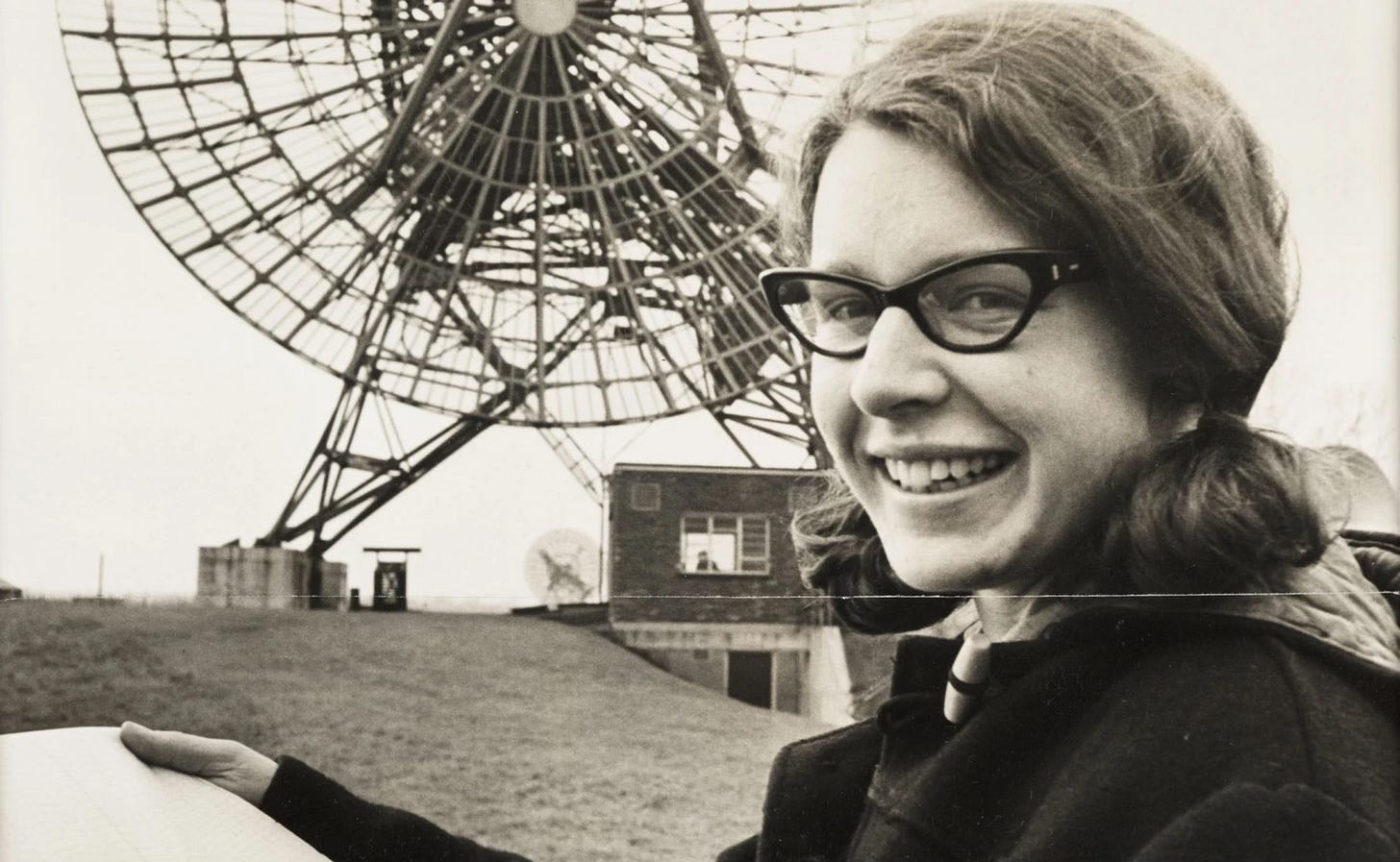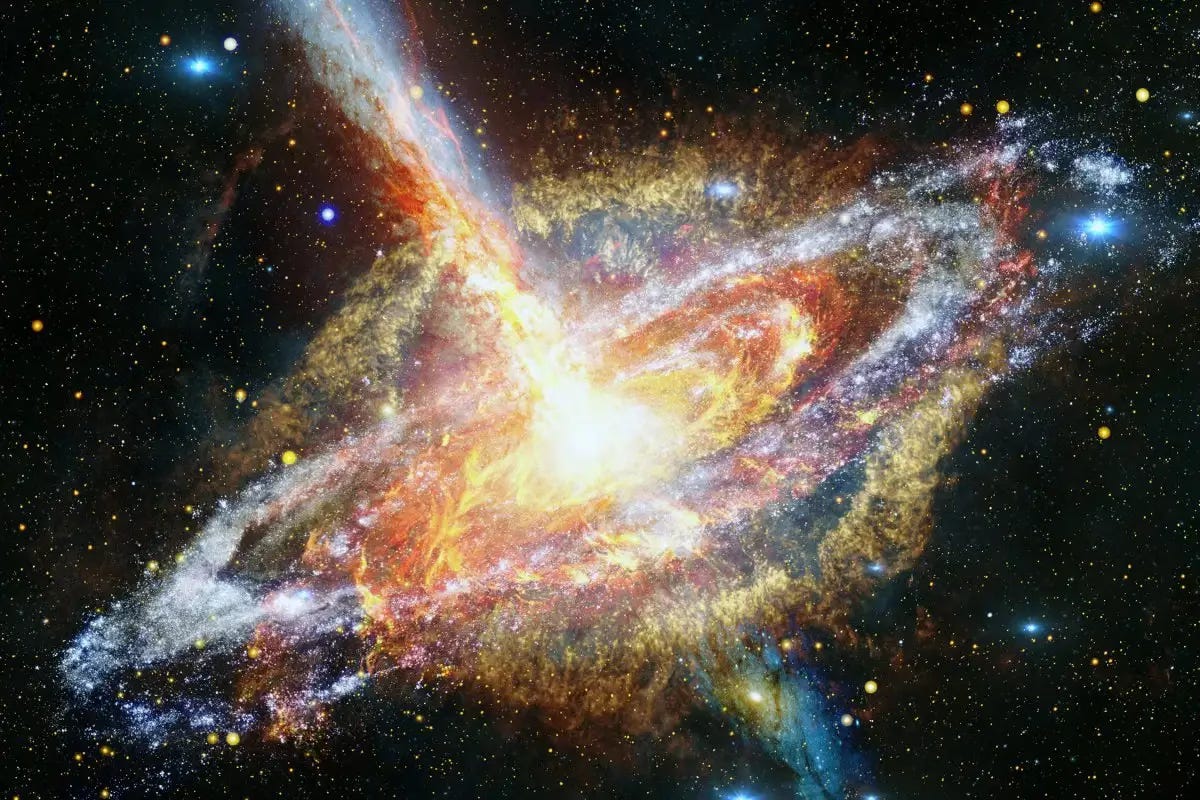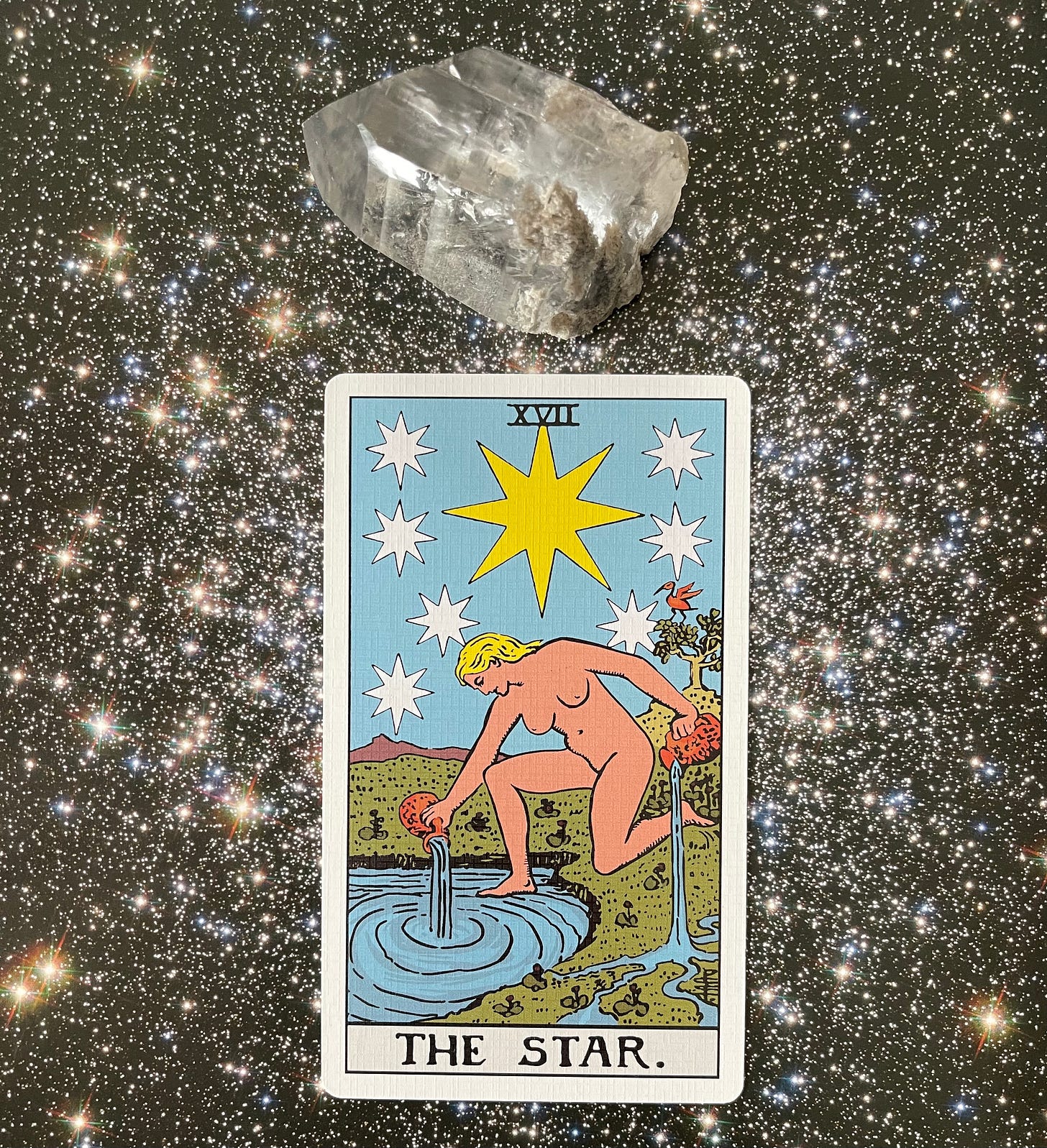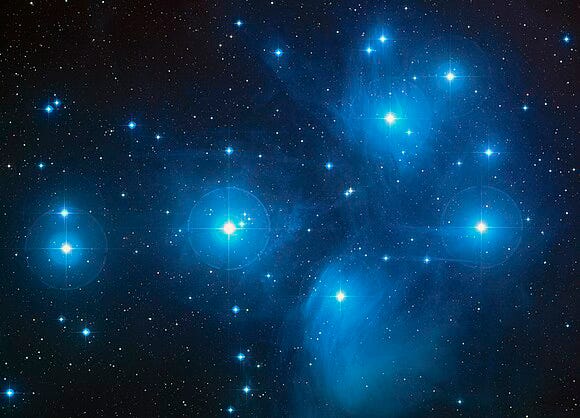The Star
Astronomer Jocelyn Bell Burnell + the meaning of HOPE
“We are living with the reality that nothing lasts;
we need to learn to love anyway.”
—Jocelyn Bell Burnell
Sometimes I feel as if my story (the one I am chiseling into a novel from the marble rock-face of my subconscious) has its own sentience. It seems to do what it wants, leading me down paths I don’t expect into places that I don’t anticipate. Often (through the rabbit holes of my research), it introduces me (whether in real life or through writing) to people who become important teachers and guides—not just for my project but for my life.
It’s Aquarius season for just a few more days yet—meaning we are in the archetypal energy of the STAR card. Appropriately, my story recently introduced me to Jocelyn Bell Burnell, the astronomer now credited with the discovery of PULSARS, neutron stars that emit spinning beams of radiation from their magnetic poles; energetic waves that, from our earthly vantage point, pulse with light. (I say now credited, because Bell Burnell was left off of the 1974 Nobel prize award bestowed on her two male advisors for the discovery she made as a graduate student in 1967.) By tracking the rate at which the pulsars’ orbits decay, astronomers have since been able to measure the gravitational density surrounding these stars with unprecedented accuracy, enabling the testing of Einstein’s theory of General Relativity. Science literature often compares the pulsar to a lighthouse at sea, alerting astronomers to the shape and structure of the vast, ineffable universe.
And here we are—you and I—sitting on our watery planet, bathed by these celestial beacons, looking at the STAR card.
Wow, right?
I’m marveling at the (coincidental?) way in which the figure on the card, stripped of all pretense (and clothing), trains her focus not on the heavenly bodies above her, but the work of her hands—the pouring out of water into a pool, onto the ground. She doesn’t look at the stars, and yet I get the sense that she is aware of them. Perhaps listening to the stars overhead as Bell Burnell did back when she first noticed their surprising, rhythmic pulse?
Where so many of her predecessors had used visual telescopes to conduct their research, Bell Burnell helped to build a radio telescope that could track the precise location, positioning and brightness of a star based on the frequency of the energy it emits. Only by listening to the stars could Bell Burnell discern the pulsing beat at the heart of the neutron star.
To my mind, this speaks to the subtle energy of the STAR card. Its message
of hope,
of restoration,
of the vivification of the soul’s purpose
is felt, rather than seen. Whispered rather than demonstrated.
The STAR follows the TOWER in the major arcana. It arrives after our battlements have been trampled, the outward trappings of our knowledge tumbled along with the foundations underneath them. The TOWER crumbles and leaves an absence—like the void of space, ready to be filled with our STAR-lit dreaming.
Reading Bell Burnell, I’m reminded that the transition from TOWER to STAR parallels the macrocosmic story of our very bodies. In a 2013 lecture reflecting on her Quaker faith and her role as a scientist, Bell Burnell alludes to Carl Sagan’s famous quote “we are made of star stuff,” reminding her audience that we owe the chemical make up of our bodies to the deaths of stars that winked out long before our Sun was born. We were made through cataclysmic destruction, without which, Bell Burnell notes, the universe itself will not survive.
“One thing that will happen in the distant future is that the stars will go out…All those useful chemical elements like oxygen, carbon, gold are formed inside stars, and at the expense of hydrogen. There will come a time when in some dark clouds new stars will form, but will not light up because they do not contain enough hydrogen to start shining. Meanwhile the old stars will be reaching the end of their lives and fading. So there will come a time when the old stars die and no new stars start—the lights will go out.”
It’s a bleak picture—a universe that demands upheaval and promises only death.
And yet, as Bell Burnell says, “we need to learn to love anyway.”
This is the gentle urging of the STAR card—
Love anyway.
Pour your heart out onto the earth anyway.
Dream anyway.
We need, Burnell says, to adopt a new understanding of hope:
“We tend to believe that hope is about happy endings, about things coming out OK in the end, and if that is what we believe we are in trouble here! There is an alternative understanding of what hope means. It is one that says hope is less about the future and more about the now; it is an attitude, stubborn and persistent, consistently doing what feels to be right and not giving up, even when things are dark. It is about identifying things that are good, and putting effort into them; it’s about finding meaning in all forms of existence. It’s about believing that through such actions we may bring something to fulfilment.”
All of this rings true, and yet—there’s more.
The STAR card reminds us that we are not alone in our dreaming. The seven star-sisters (the Pleiades) that surround the central star, the flowing pool of water that symbolizes the oceanic union of all things, the winged animal-aspect of Thoth, God of Wisdom, perched in the landscape—these elements speak to the presence of divine, benevolent support for our central figure. But to feel this presence ourselves we have to practice what Bell Burnell calls an “a-rational way of working,” based in intuition rather than reason or logic. A-rationality, Bell Burnell reminds us, is different from ir-rationality, which is “illogical or not reasonable.” Thus she eschews religious accounts of the origin of the universe, knowing that they don’t stand up to scientific scrutiny, but declares:
“I ‘know’ that there is a God, a living, loving God who works through people, prompting, nudging. A God of inspiration, of creativity; a God we can sense in the silence of a gathered Quaker meeting. One who holds a mirror up to us so that we can see our behavior, keep our standards. One before whom masks, poses and postures drop away; one who knows us as perhaps only our parents knew us; there we are most truly ourselves.”
Burnell’s point of contact with this divine presence is the Quaker Meeting, a communal practice of sitting in a meditative circle with members ministering to one another as intuition compels. But the central, solitary figure in the STAR card, naked, kneeling, reflects a similar experience of sacred presence, even if she is only half-conscious of her participation in it.
The figure pours one pitcher out into the pool (knowingly, as she is looking at it) while the other streams over the earth beneath her without her conscious involvement. “I am aware,” Bell Burnell explains, “that I have been several times prompted to minister in a Meeting for Worship, or to speak on a particular topic, without understanding why, but follow that leading to do so, subsequently to discover I was speaking to a need unknown to me. Over time I have learnt to pay attention to such promptings, but suspect I still fail to recognise some.”
Bell’s account of her experience in Meeting suggests that when we act in alignment with our purpose, as advocated in the STAR card, (and we might argue advocated by the practice of tarot as a whole), we end up watering flowers that we didn’t even know were in need of our tending. Our gentle, aligned effort becomes a gift, not just for our own healing and restoration, but that of the world around us.
This effort need not be particularly active, or apparent. In fact, in STAR energy, the best effort is often that which opens a space for REST.
“So close is the sense of communion that breathing becomes prayer. I encounter a God who supports us, cares for us, grieves with us, empowers us and acts through us in the world, but particularly at such moments calms, heals, holds and sends us out again a little more sensitive, a little wiser, to make a better world.”
This is the kind of energy that the STAR card suggests is waiting for you to claim as your own when it comes up in a reading. And, as our guiding energy for Aquarius season, I hope it has found you, supported and guided you through the turbulent early weeks of this year.
In the monthly tarot circle that I host for my faith community, we drew a trio of cards to clarify how STAR energy might be showing up in our lives with the following prompts:
CARD 1: What light is here to guide me?
CARD 2: What waters are here to replenish me?
CARD 3: What light shines through me as a guide for others?
If you try this spread I invite you to share your findings in the comments. Your insights may provide a sign post, a lighthouse beam, a pulsar’s beacon, across the dark expanse of the internet to another reader. Plus, it’s FUN.
And—as my story likes to remind me—fun is worth the effort of its making.

Quotes above from:
Jocelyn Bell Burnell. A Quaker Astronomer Reflects: Can a Scientist Be Religious? The Religious Society of Friends (Quakers) in Australia, 2013.







Such a beautiful post and a great reminder about how, when faced with the ultimate truth of nothingness, that's when we find our greatest joy and meaning (and hope!).
Great article! Thank you for introducing me to Jocelyn Bell Burnell! Lots of great nuggets to take away